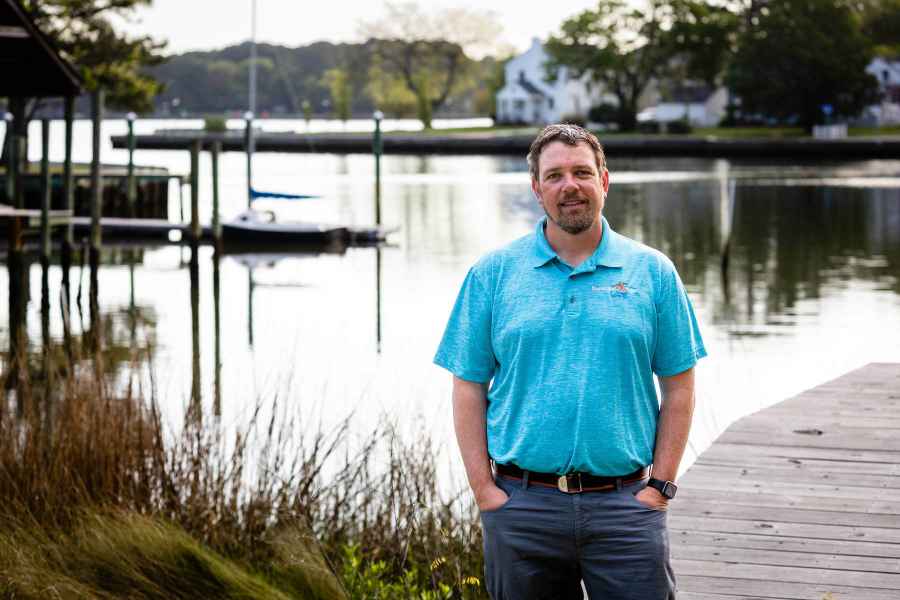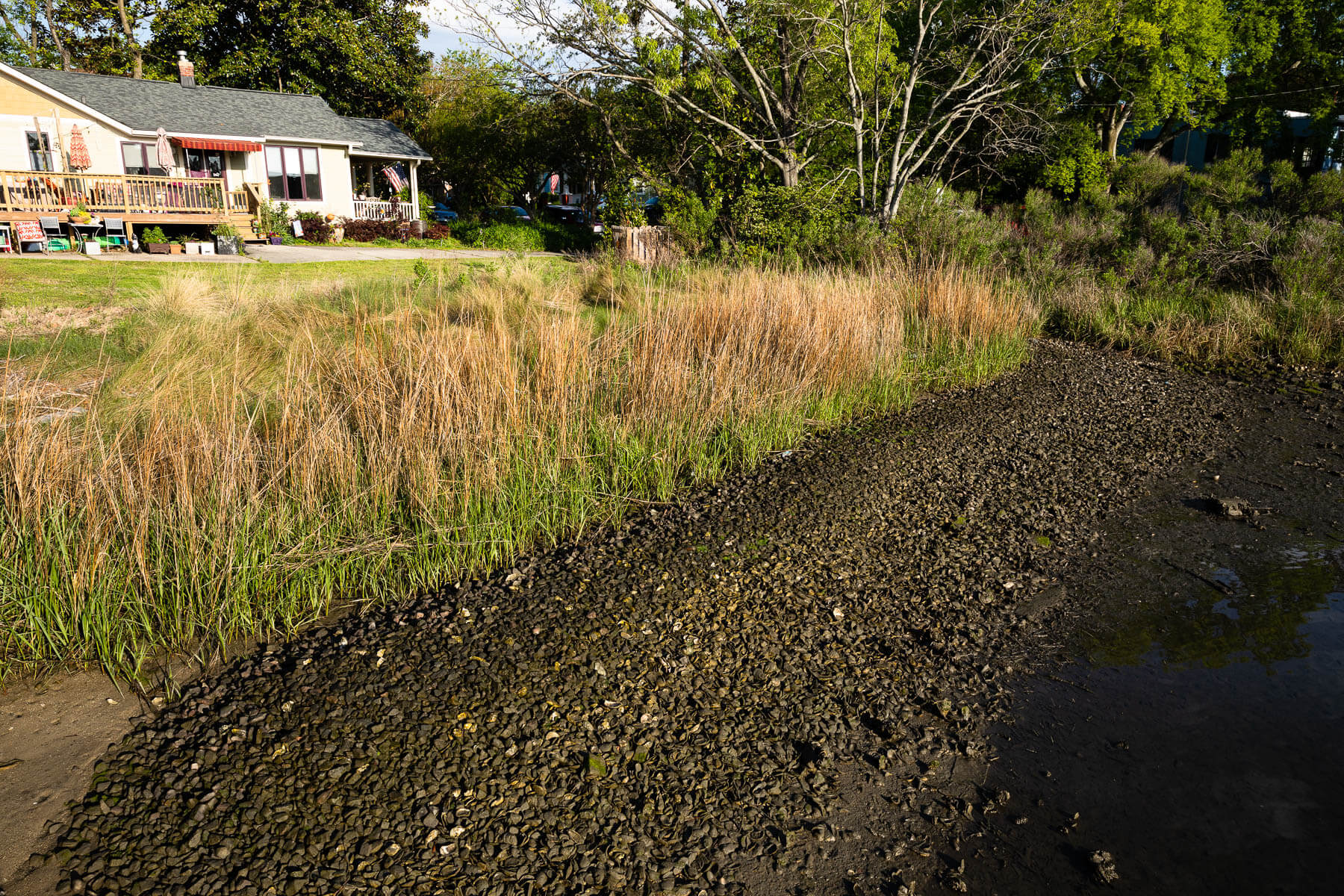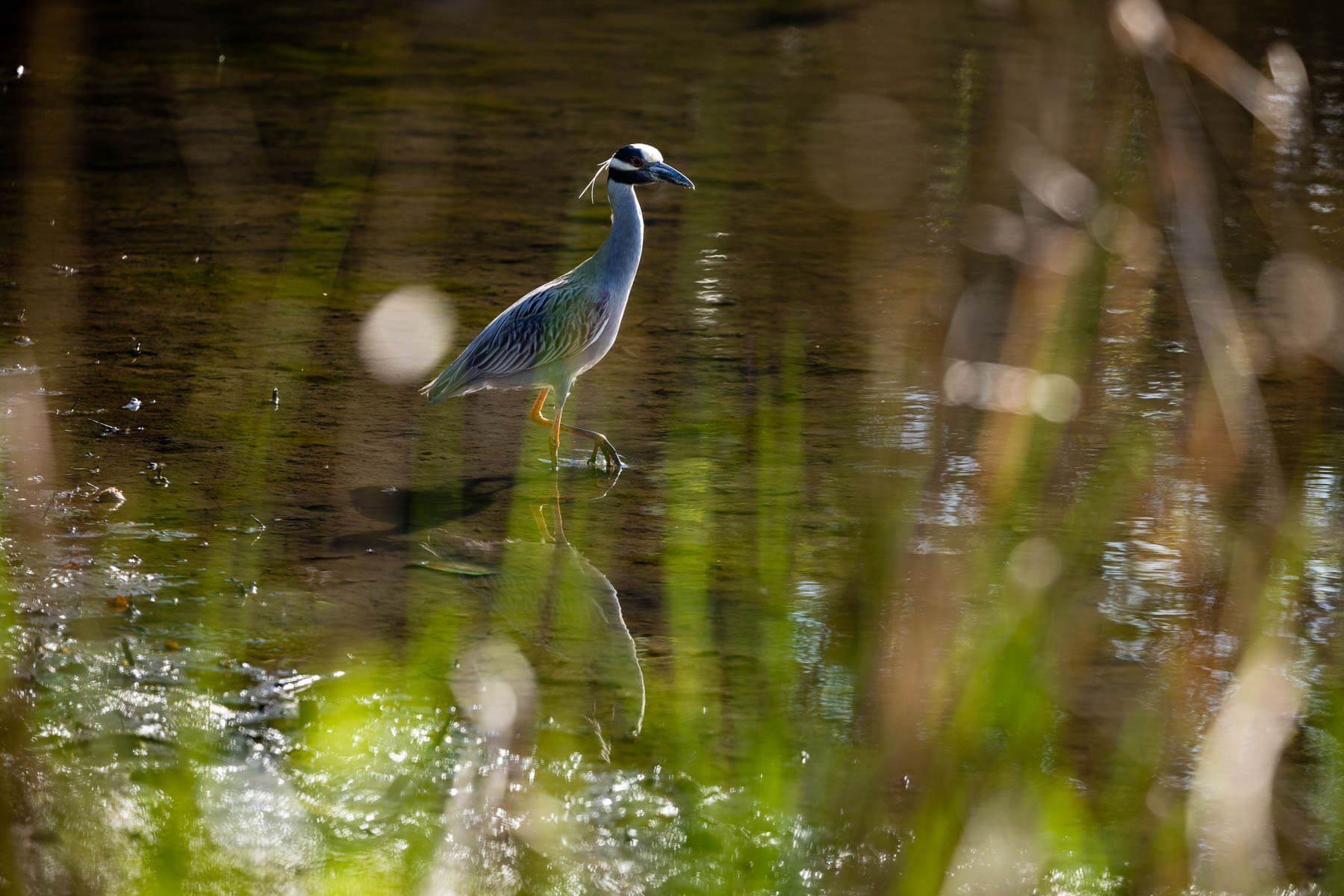A growing nonprofit scales up its impact on the Elizabeth River

For Tara Honey, mornings are the best time to enjoy her new shoreline on Knitting Mill Creek.
Herons and egrets hunt at the edge of the grass. Oysters shimmer on either side of the dock. A sunrise unfolds across the creek.
“I have my coffee out there almost every morning,” said Honey, who has been a Norfolk, Virginia resident for over a decade.
When Honey first purchased the home, the shoreline was covered in rip-rap and crushed concrete—an unsightly and outdated technique for fending off erosion. What Honey wanted was a living shoreline, which uses natural systems like natives grasses and oysters to not only secure the shoreline, but improve the water quality.
According to Honey, she always dreamed of having a living shoreline but didn’t think she could afford it. That was until she found out about the Elizabeth River Project’s (ERP) River Star Homes program. The program offers a cost-share option where homeowners pay half the cost, and the ERP, through a contract with the city or grant funding, pays the other half.
“I couldn’t have done it without them,” said Honey.

A first for the growing nonprofit
The project is special for both Honey and the ERP, as it marks the first shoreline that the nonprofit fully constructed using heavy machinery on their own. Prior to 2019, the ERP worked only on smaller shoreline projects using wheelbarrows and people-power, and in some cases, used contractors for the construction-heavy projects like living shorelines and rain gardens. For these larger projects, the ERP would design the installation and acquire the permit but then hand the job over to a local construction company.
However, finding contractors to partner with was always a challenge. Staff would reach out to large marine contractors about projects but the sites would be too small for their equipment. Or the opposite would happen; a small contractor would express interest in the work but have no experience with living shoreline construction or not carry the required insurances for the work.
Bay Environmental, a long-time partner of the ERP and a local marine contractor, would often design larger projects and install them, but with only one contractor available for the work and interest growing each year, ERP began to see a bottleneck of potential projects.
“Then we started saying, ‘we can do this work ourselves,’” said Joe Rieger, deputy director of restoration at the ERP
In 2018, the ERP partnered with Environmental Concern, Inc. to apply for the Chesapeake Bay Program’s Small Watershed Grants to acquire small-scale construction training. Funded by the EPA and administered by the National Fish and Wildlife Federation, these grants are awarded to local governments and non-governmental organizations working to protect and improve local waters and habitats across the Bay watershed.
Because of their extensive construction experience, Environmental Concern received the grant to provide training to the ERP. Over the course of a few months, the ERP staff were trained on using heavy equipment like Bobcats and excavators, putting together cost estimates for the construction projects and acquiring vehicle and safety insurance. Environmental Concern also suggested new design software to use on living shorelines and rain gardens.
“All that stuff pushed us towards being more of a nonprofit contractor where we can do almost all this work in house,” said Rieger.
The “teaching lesson” project was on Honey’s Knitting Mill Creek shoreline. Honey’s shoreline had been eroding over the years due to sea level rise, storms and consistent wave action from boaters. Crushed concrete and rock piled at the water’s edge, which Rieger refers to as “the typical Norfolk shoreline,” was doing little to manage the problem.
Environmental Concern providing some oversight of the work, and the ERP worked with another local contractor to mentor them on the project as well. They installed a sill, which is a rock structure placed parallel to the shore, placed sand behind the sill, and then planted a variety of marsh grasses in the sand Oysters were also planted along the water—and new oysters have been “recruited” naturally. Honey, a trained naturalist, was able to choose her own plants, which she says really come alive mid-Spring to summer.
“There’s something blooming about five months of the year,” said Honey.

Scaling up their work in Norfolk
Since receiving the construction training, the ERP has been able to get more done along the Elizabeth River and its tributaries.
“We have around six or seven projects under our belt with machines now,” said Rieger.
This work includes not just living shorelines but rain gardens. Rain gardens are installed to soak up rainwater after a storm to reduce flooding on the property, which can be quite frequent in coastal areas like Norfolk. The gardens also benefit local waterways because the water they absorb filters into the ground slowly instead of washing into the roads, carrying excess nutrients and sediments into the rivers and creeks.
After receiving the construction training from Environmental Concerns and Bay Environmental, the ERP was able to become a Class C contractor in Virginia. Between the nonprofit’s cost share program and their in-house construction offerings, they have an easier time convincing landowners to do these projects.
“The number one factor preventing people from doing a living shoreline here in Norfolk is cost—the second is finding a contractor,” said Rieger. “We can now do both of those.”
As an urban area, Norfolk’s runoff strains the Elizabeth River and the Chesapeake Bay where a large chunk of the city’s shoreline rests. The community along Knitting Mill Creek is template for coastal neighborhoods of the future. Rain gardens, living shorelines, restored wetlands and vegetation planted along walking paths have already popped up in the area. Businesses like marinas, breweries and bike shops, as well as various homeowners, are all on board to play their part in managing runoff issues.
“The whole idea is to get them involved to do projects on their property and get them invested in the river,” said Rieger.
The ERP works extensively with groups like the Lafayette Wetlands Partnership, a community-based organization that installs and maintains natural wetlands, as well as Norfolk State University, Old Dominion University and the City of Norfolk itself. The area has become so important to the ERP that they will be constructing a new facility on Knitting Mill Creek that will showcase environmental practices for homeowner, as well as serve as the nonprofit’s headquarters.
As these projects expand in Norfolk, the hope is that community mindsets will change as well. Living shorelines can be perceived as “messy” by people who are so used to the flat lawns and high walls that do nothing for the natural ecosystem. However, these perceptions change the more people see their neighbors adopting the projects.
“Every shoreline we do helps with water quality, but it also influences their neighbor to do something, too,” said Rieger.

Comments
There are no comments.
Thank you!
Your comment has been received. Before it can be published, the comment will be reviewed by our team to ensure it adheres with our rules of engagement.
Back to recent stories